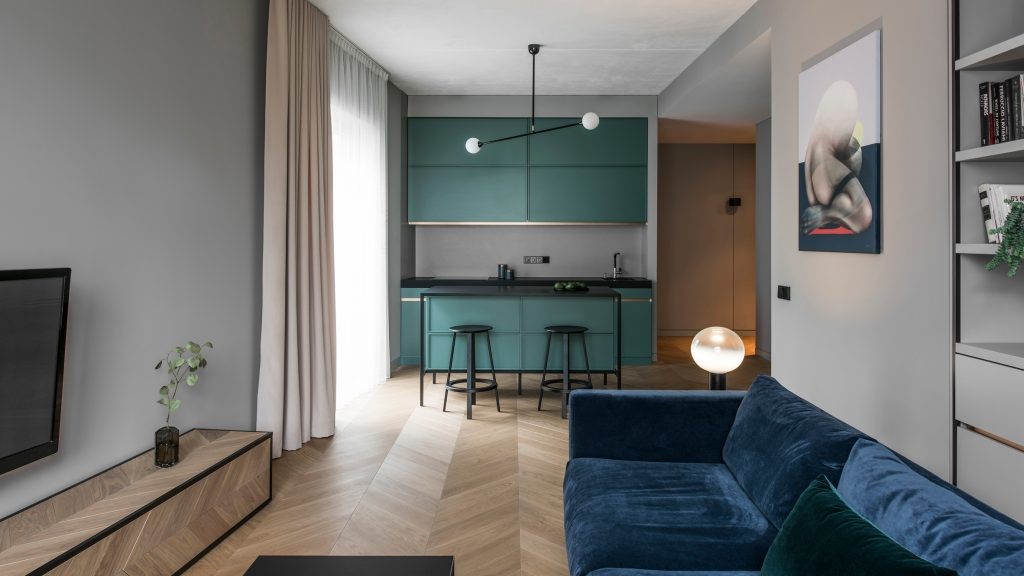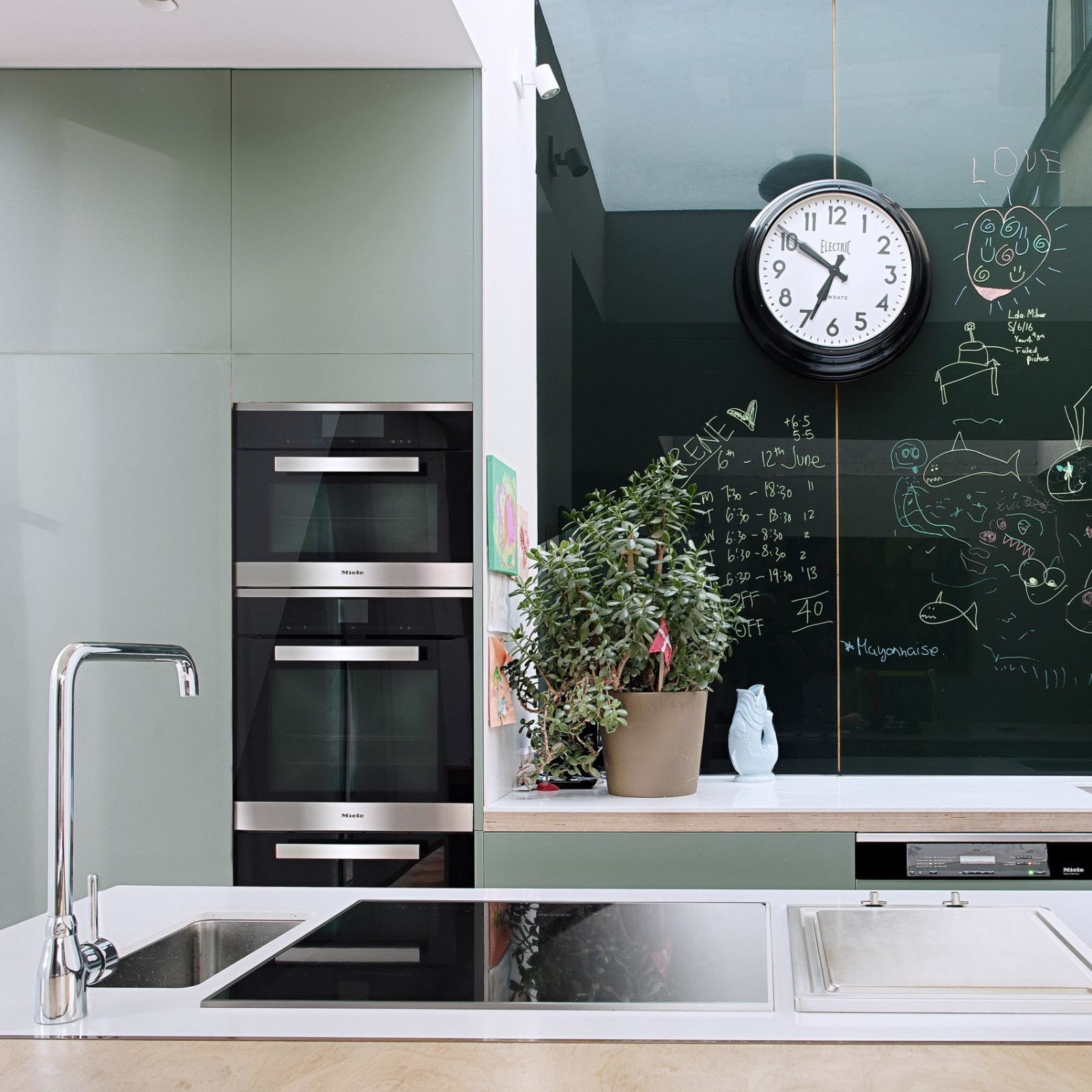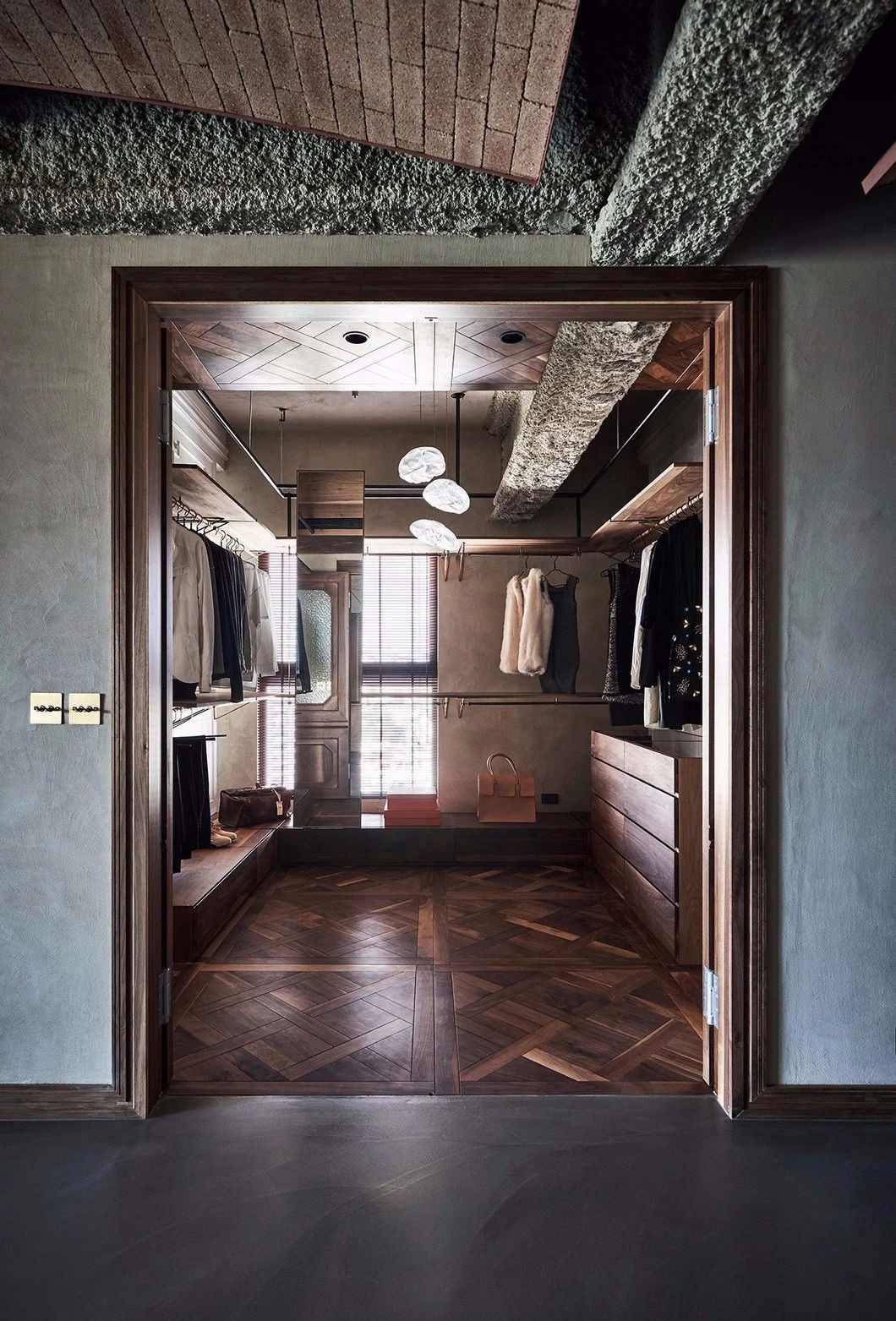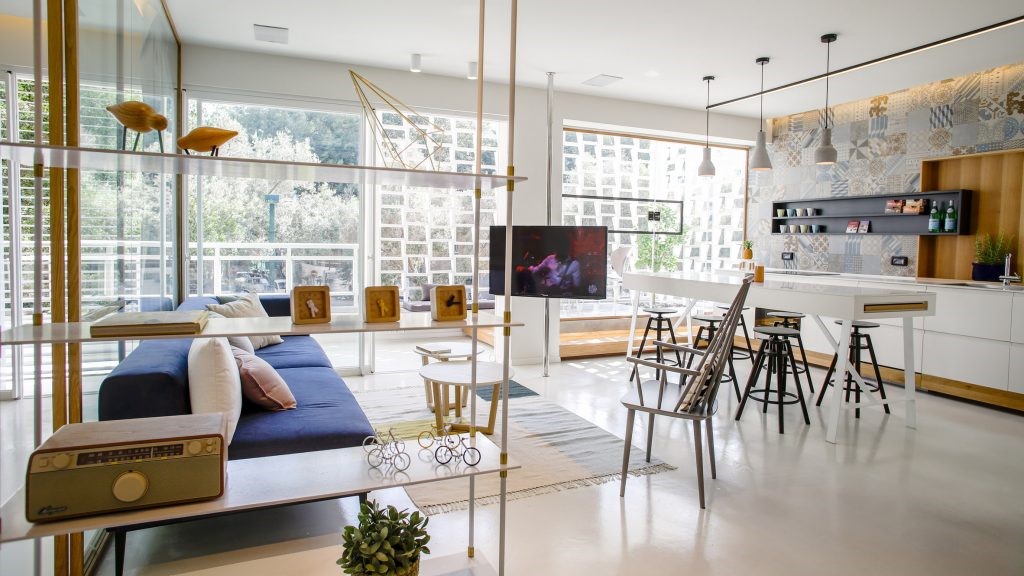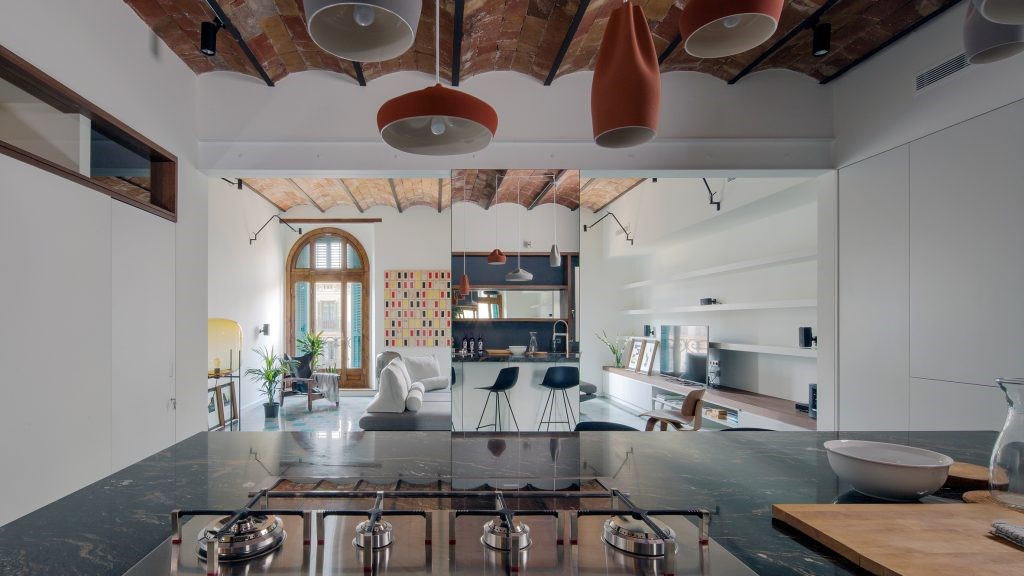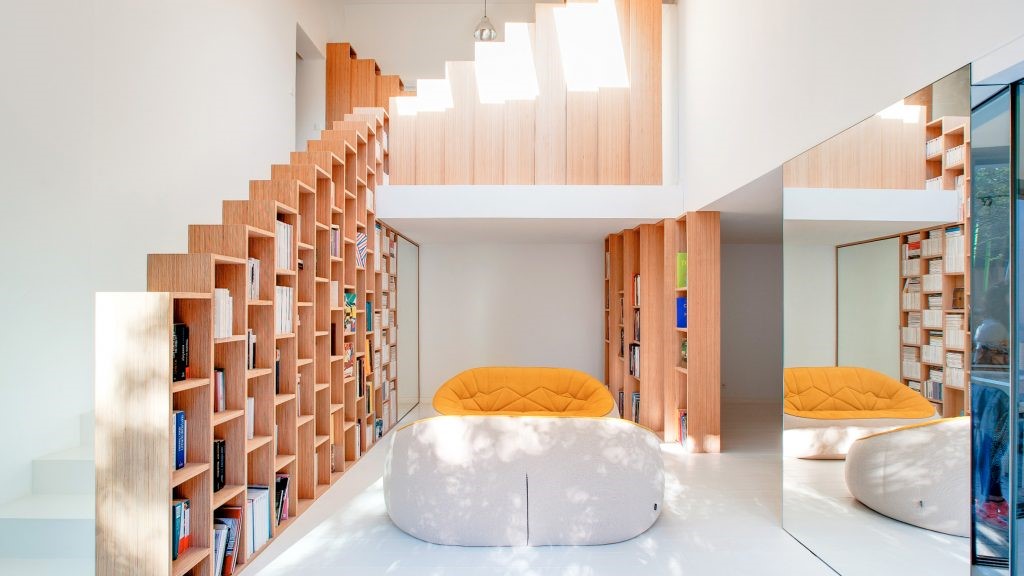AD Classics Bonnefantenmuseum Aldo Rossi
2016-04-30 08:00
Courtesy of Flickr user l a b e t e
马斯特里赫特是荷兰林堡省的首府,历史可以追溯到罗马帝国。正是在这个城市,“马斯特里赫特条约”-我们所知道的欧洲联盟-于1993年生效。一个多世纪以来,邦内夫坦提斯博物馆一直是林堡最重要的考古学和美术博物馆。[1]这批藏品最初存放在马斯特里赫特中部的一座寺院-博内夫坦提克罗斯特。
Maastricht, capital of the Dutch province of Limburg, has a history which stretches back to the Roman Empire. It was in this city that the Maastricht Treaty, which ushered in the European Union as we know it, went into effect in 1993. For over a century, the Bonnefantenmuseum has served as Limburg’s premier museum for archaeology and fine arts.[1] The collection was originally housed in the Bonnefantenklooster, a monastery in central Maastricht from which the museum derived its name.[2]
上世纪90年代初,林堡省承诺投入4000万欧元,在塞拉米克建造一座新的博物馆大楼。塞拉米克是马斯特里赫特历史中心马斯里赫特河对面的前工业区。博内芬德博物馆选择委托意大利建筑师阿尔多·罗西(Aldo Rossi)进行设计,博物馆馆长亚历山大·范·格列文斯坦(Alexander Van Grevenstein)认为,他“把富有表现力的创造性与一种保留的视觉语言结合在一起”。[3]该项目有一个清晰的、看似传统的轮廓:一系列从上面和两侧照亮的画廊,组成了翅膀,围绕着一个中央楼梯。[3]
At the beginning of the 1990s, the Province of Limburg committed €40million to construct a new museum building in the Céramique – a former industrial estate directly across the River Maas from Maastricht’s historic center. The Bonnefantenmuseum chose to commission Italian architect Aldo Rossi for its design, as the museum’s director Alexander Van Grevenstein believed he “coupled great expressive inventiveness with a reserved visual language.”[3] The project had a clear, deceptively traditional, outline: a series of galleries lit from above and the sides, organized into wings and surrounding a central stairway.[3]
Courtesy of Wikimedia user Kleon3
罗西的宏伟提议基本上是三方的,包括一座主楼、一座圆柱形的圆柱体和一座带圆顶的观景台,以供游客欣赏城市景观。[4]主建筑的布局形式是一座大型、对称的“E”型建筑,其双臂面向河岸。中央手臂紧靠着圆顶塔,这是博物馆河岸外墙最突出的特征。主楼是用传统材料建造的,即砖、石和木头。然而,这些材料的沉重掩盖了墙壁的渗透性,墙的设计是为了让足够的日光在画廊空间内自然产生亮度。
Rossi’s volumetic proposal was essentially tripartite, comprising a main building, a cylindrical body with a dome, and a belvedere to allow visitors to soak up city views.[4] The main building is laid out in the shape of a large, symmetrical ‘E,’ the arms of which face the bank of the river. The central arm abuts the domed tower, the most prominent feature of the museum’s riverfront façade. The main building is constructed from traditional materials – namely brick, stone, and wood. The heaviness of these materials, however, belies the permeability of the walls, which are designed to admit enough daylight to naturally produce brightness within the gallery spaces.[5]
自然日光是罗西控制游客对博物馆体验的关键。博物馆的正面和侧面是封闭的,而构成博物馆主轴的中央侧翼的墙壁是开放的。这座建筑砖砌立面上点缀着的开口与艺术品和流通路线相互作用,把去博物馆的旅行变成了“长廊建筑”。与此同时,长长的中央楼梯沐浴在全玻璃天花板上的阳光下,营造出一种有盖街道的感觉,而不是室内空间。
Natural daylight was key to Rossi’s control over the visitors’ experience of the museum. The front and sides of the museum are closed while the walls of the central wing, which forms the main axis of the museum, are open. Punctuated openings in the building’s brick façades interact with both the artworks and the circulation routes, turning a trip to the museum into a “promenade architecturale.” The long central stairway, meanwhile, is bathed in sunlight from a fully glazed ceiling, creating the sense of a covered street rather than an indoor space.[6]
这楼梯也许是罗西最具象征意义的建筑姿态。按照他自己的描述,这是“与世界联系在一起的”-把荷兰和葡萄牙的航海国家相提并论。借用启发罗西的葡萄牙诗人的话来说,荷兰可以被看作是陆地和海洋开始的国家。
This staircase is perhaps Rossi’s most symbolic architectural gesture. It is, according to his own description, “linked to the world” – drawing a parallel between the seafaring nations of The Netherlands and Portugal. To paraphrase the Portuguese poet who inspired Rossi, The Netherlands could be seen as the country where the land ends and the sea begins.[7]
Montagnes de Liege. Used under Creative Commons. ImageCourtesy of Flickr user Stephane Mignon
蒙塔格尼斯·德列日。在知识共享项下使用。Flickr用户Stephane Mignon的形象礼貌
奇怪的是,尽管罗西声称与葡萄牙有联系,但楼梯的灵感实际上来自比利时的一个例子:位于列日的蒙塔格尼·德比伦(Montagne De Bueren)。[8]374步的室外楼梯与邦纳芬提斯博物馆的中央楼梯形成了清晰的视觉平行,尽管它是用风化的石头建造的,而不是博物馆抛光的硬木。
Curiously, and despite Rossi’s stated connection to Portugal, the inspiration for the stairway actually comes from a Belgian example: the Montagne de Bueren in Liège.[8] The 374-step outdoor stairway forms a clear visual parallel with the central stairs of the Bonnefantenmuseum, albeit built of weathered stone instead of the museum’s polished hardwood.[9]
中央楼梯是室内最具决定性的特征,外观则是由圆柱形的圆柱形塔所主导。虽然它与博物馆本身并没有分离,但它在视觉上是分开的:它的圆形圆顶,涂着光亮的锌,在主博物馆大楼的直线砖块的衬托下脱颖而出。[10]与楼梯一样,罗西专门设计的穹顶是为了参照欧洲的古典建筑规范。他特别选择参考都灵建筑师阿莱桑德罗·安东内利(Alessandro Antonelli)的作品,他在圣高登齐奥大教堂(Basilica Of San Gaudenzio)上修长的古典主义圆顶,很可能是博内芬达博物馆(Bonnef产前博物馆)上比例相似的建筑的灵感所在。
While the central stairway is the interior’s most defining feature, the exterior is visually dominated by a domed cylindrical tower. Although it is not detached from the museum proper, it is set apart visually: its circular dome, clad in lustrous zinc, stands out against the rectilinear brick of the main museum building.[10] As with the staircase, the dome was specifically intended by Rossi to reference Europe’s classical architectural canon. He specifically chose to reference the work of Alessandro Antonelli, a Turinese architect whose slender classicist dome over the Basilica of San Gaudenzio likely served as an inspiration for its similarly-proportioned counterpart atop the Bonnefantenmuseum.[11,12]
Basilica of San Gaudenzio. ImageCourtesy of Wikimedia user Marco del Torchio
圣戈登齐奥大教堂。图片-维基媒体用户马尔科·德尔·托奇的礼貌
提到古典主义的例子完全符合阿尔多·罗西的性格。他反对现代主义的观念,即所有的历史形式和美学都必须被彻底抛弃;相反,他认为,建筑应该尊重和连接其城市环境,从而保护城市的结构,而不是用建筑的无后继性来颠覆它。在罗西看来,某些形式和思想在建筑史上基本上是一致的。这样,他自己的设计就是他对建筑的诠释的物理表现。他设计的邦内夫坦提斯博物馆,有着简朴的砖墙和对比鲜明的金属穹顶,是否与马斯特里赫特的织物完美地融合在一起,这最终还是值得商榷的。
References to classicist examples were entirely within character for Aldo Rossi. He objected to the Modernist notion that all historical forms and aesthetics must be entirely abandoned; instead, he argued, architecture should respect and connect to its urban context, thereby preserving the fabric of the city instead of upending it with architectural non sequiturs. In Rossi’s view, certain forms and ideas have remained essentially consistent in the history of architecture. In this way his own designs were physical manifestations of his interpretation of architecture. Whether his design for the Bonnefantenmuseum, with its austere brick façades and its contrasting metal dome, merges seamlessly with the fabric of Maastricht is ultimately up to debate.[13]
新的邦纳芬坦提斯博物馆于1995年3月9日首次向公众开放。到今年年底,将有超过17.5万人参观该博物馆;在新博物馆开业后的头六周内,将有整整5万人参观,超过去年全年的参观人数-原来的地点已经投入使用。1997年进行的一项调查表明,73%的游客特别欣赏这座新建筑的建筑-游客的比例高于对艺术品收藏本身的满意程度。
The new Bonnefantenmuseum first opened its doors to the public on March 9, 1995. Over 175,000 people would visit the museum by the end of the year; a full fifty thousand would visit within the first six weeks of the new museum’s opening, surpassing visitorship for the entirety of the last year the old location had been in service. A survey taken in 1997 indicated that 73% of visitors specifically appreciated the architecture of the new building – a greater percentage of visitors than were satisfied with the art collections themselves.[14]
尽管阿尔多·罗西在邦纳芬德博物馆正式开放两年后就去世了,但他的作品仍然是马斯特里赫特的一个里程碑。他自己的话,在设计阶段写的,现在可以理解为博内芬达博物馆创作的回顾展:“但是现在,就像我们站在观景台上一样,我们可以把博物馆看作一个整体,也许这是一个失落的整体,我们只认识到这一点,这要归功于我们生命中的那些碎片,它们也是过去时代艺术和欧洲的碎片。“
Although Aldo Rossi passed away only two years after the Bonnefantenmuseum officially opened its doors, his creation remains a landmark in Maastricht. His own words, written during the design phase, can now be read as a retrospective on the creation of the Bonnefantenmuseum: “But now, just as if we were standing on the belvedere, we can view the museum as a whole, perhaps a lost whole which we only recognize thanks to those fragments of our lives which are also fragments of art and Europe of bygone days.”[15]
[1]理查兹,格雷格。文化景点和欧洲旅游。纽约:CABI酒吧,2001年。第94页。[2]“Bonnef产前博物馆”。斯泰登。2016年4月4日访问。[3]“大楼”马斯特里赫特博物馆。2016年4月5日访问。http:/www.bonnef产前.nl/en/About_us/Building_en_Architect。[4]Rossi,Aldo。“米特先生”马斯特里赫特博物馆。2016年4月5日访问。[5]Richards,P96。[6]“建筑物”[7]Rossi,“Verlust der Mitte”[8]“Bonnef产前博物馆”[9]“Bueren的楼梯”。斯泰登。2016年4月4日访问。[10]“大楼”[11]Rossi,“Verlust der Mitte”[12]Bordo,Franco等人。作者声明:Alla Scoperta Del Neoclassico Attraverso Le Opere Di Alessandro Antonelli。都灵:Agenzia di accoglienza della profcia di Novara,2008年。13 Zukowsky,John。“阿尔多·罗西”大英百科全书。2016年4月5日访问。http:/www.britannica.com/传记/阿尔多-罗西。[14]Richards,第98至100页。[15]Rossi,“Verlust der Mitte”。
[1] Richards, Greg. Cultural Attractions and European Tourism. New York: CABI Pub., 2001. p94. [2] "Bonnefantenmuseum." Steden. Accessed April 4, 2016. [access] [3] "The Building." Bonnefantenmuseum Maastricht. Accessed April 5, 2016. http://www.bonnefanten.nl/en/about_us/building_en_architect. [4] Rossi, Aldo. "Verlust der Mitte." Bonnefantenmuseum Maastricht. Accessed April 5, 2016. [access] [5] Richards, p96. [6] “The Building.” [7] Rossi, “Verlust der Mitte.” [8] “Bonnefantenmuseum.” [9] "Stairs of Bueren." Steden. Accessed April 4, 2016. [access] [10] “The Building.” [11] Rossi, “Verlust der Mitte.” [12] Bordino, Franco et al. Alla Scoperta Del Neoclassico Attraverso Le Opere Di Alessandro Antonelli. Turin: Agenzia di Accoglienza Turistica della Provincia di Novara, 2008. [13] Zukowsky, John. "Aldo Rossi." Encyclopedia Britannica. Accessed April 5, 2016. http://www.britannica.com/biography/Aldo-Rossi. [14] Richards, p98-100. [15] Rossi, “Verlust der Mitte.”
建筑师阿尔多罗西位置马斯特里赫特,邦纳芬达博物馆,6221马斯特里赫特,荷兰建筑师主管阿尔多罗西项目年1995照片詹姆斯泰勒福斯特
Architects Aldo Rossi Location Maastricht, Bonnefantenmuseum, 6221 Maastricht, The Netherlands Architect in Charge Aldo Rossi Project Year 1995 Photographs James Taylor-Foster
 举报
举报
别默默的看了,快登录帮我评论一下吧!:)
注册
登录
更多评论
相关文章
-

描边风设计中,最容易犯的8种问题分析
2018年走过了四分之一,LOGO设计趋势也清晰了LOGO设计
-

描边风设计中,最容易犯的8种问题分析
2018年走过了四分之一,LOGO设计趋势也清晰了LOGO设计
-

描边风设计中,最容易犯的8种问题分析
2018年走过了四分之一,LOGO设计趋势也清晰了LOGO设计








































































